
A picture of the National Audit Office logo
SESSION 2022-23
24 MAY 2022
HC 243
REPORT
by the Comptroller
and Auditor General
Environmental compliance
and enforcement
Department for Environment, Food & Rural Affairs

The National Audit Office (NAO) scrutinises public spending
for Parliament and is independent of government and the civil
service. We help Parliament hold government to account and
weuse our insights to help people who manage and govern
public bodies improve public services.
The Comptroller and Auditor General (C&AG), Gareth Davies,
is an Officer of the House of Commons and leads the NAO.
Weaudit the financial accounts of departments and other
publicbodies. We also examine and report on the value for
money of how public money has been spent.
In 2020, the NAO’s work led to a positive financial impact
through reduced costs, improved service delivery, or other
benefits to citizens, of £926 million.
We are the UK’s
independent
public spending
watchdog.
We support Parliament
in holding government
toaccountand we
help improve public
services throughour
high-quality audits.

Report by the Comptroller and Auditor General
Ordered by the House of Commons
to be printed on 23 May 2022
This report has been prepared under Section 6 of the
National Audit Act 1983 for presentation to the House of
Commons in accordance with Section 9 of the Act
Gareth Davies
Comptroller and Auditor General
National Audit Office
17 May 2022
HC 243 | £10.00
Environmental compliance
and enforcement
Department for Environment, Food & Rural Affairs

The material featured in this document is subject to National Audit
Office (NAO) copyright. The material may be copied or reproduced
for non-commercial purposes only, namely reproduction for research,
private study or for limited internal circulation within an organisation
for the purpose of review.
Copying for non-commercial purposes is subject to the material
being accompanied by a sufficient acknowledgement, reproduced
accurately, and not being used in a misleading context. To reproduce
NAO copyright material for any other use, you must contact
[email protected]. Please tell us who you are, the organisation
you represent (if any) and how and why you wish to use our material.
Please include your full contact details: name, address, telephone
number and email.
Please note that the material featured in this document may not
be reproduced for commercial gain without the NAO’s express and
direct permission and that the NAO reserves its right to pursue
copyright infringement proceedings against individuals or companies
who reproduce material for commercial gain without our permission.
Links to external websites were valid at the time of publication of
this report. The National Audit Office isnot responsible for the future
validity of the links.
012143 05/22 NAO
© National Audit Office 2022

Contents
Aim of this briefing 4
Government’s overarching
environmental objectives andtargets 8
The main government bodies
responsible for environmental
complianceand enforcement 11
Environment Agency 13
Natural England 19
Office for Environmental Protection 21
How environmental compliance
ischanging 22
Case examples
Case example 1: Sites of special
scientific interest (SSSI) 24
Case example 2: Waste crime 29
Case example 3: Storm overflows 34
Appendix One
Our evidence base 39
If you are reading this document with a screen reader you may wish to use the bookmarks option to navigate through the parts. If
you require any of the graphics in another format, we can provide this on request. Please email us at www.nao.org.uk/contact-us
This report can be found on the
National Audit Office website at
www.nao.org.uk
If you need a version of this
report in an alternative format
for accessibility reasons, or
any of the figures in a different
format, contact the NAO at
For further information about the
National Audit Office please contact:
National Audit Office
Press Office
157–197 Buckingham Palace Road
Victoria
London
SW1W 9SP
020 7798 7400
www.nao.org.uk
@NAOorguk
4 Aim of this briefing Environmental compliance and enforcement
Aim of this briefing
Introduction
1 The purpose of this briefing is to support the Environmental Audit
Committee’s(the Committee’s) scrutiny of government’s environmental protection
work. It aims to provide the Committee with factual analysis as it considers the
impact of significant changes to environmental protection following EU Exit and
the Environment Act 2021, and concerns that have been raised about the work of
the regulators. Duringitsinquiries into water quality and biodiversity, issues arose
about the extentand effectiveness of government’s environmental compliance and
enforcement work including the response to reported breaches of environmental
standards andregulations.
1,2
2 The briefing gives a factual overview of the framework for environmental
compliance and enforcement in England, covering:
•
the definition of environmental compliance, its role in regulation and how it
relates to other concepts;
•
government’s overarching environmental objectives and targets and how they
are measured;
•
the roles and responsibilities of the main bodies responsible for environmental
compliance and enforcement;
•
what is known about the main bodies responsible for compliance and
enforcement, including performance, staffing and spend; and
•
recent changes for environmental compliance and enforcement.
3 It also includes case examples on compliance and enforcement issues
associated with waste crime, sites of special scientific interest and storm overflows.
1 HC Environmental Audit Committee, Water quality in rivers, Fourth Report of Session 2021-22, HC 74,
January2022, available at: https://committees.parliament.uk/publications/8460/documents/88412/default/
2 HC Environmental Audit Committee, Biodiversity in the UK: bloom or bust?, First Report of Session 2021-22,
HC136, June 2021, available at: https://committees.parliament.uk/publications/6498/documents/70656/default/
Environmental compliance and enforcement Aim of this briefing 5
Approach
4 This briefing summarises publicly available information and additional data we
requested from the Department for Environment, Food & Rural Affairs (Defra), the
Environment Agency, Natural England and the Office for Environmental Protection.
5 It draws on our Principles of effective regulation framework (see Figure 2
on page 7) to highlight the importance of compliance and enforcement within
environmental regulation. We have used the principles as a framework for the
factualinformation we set out on government bodies and case examples, and to
draw out key issues.
3
6 The case examples are designed to illustrate the issues we cover using specific
areas of environmental protection in which there is strong public interest. They draw
on wider published National Audit Office (NAO) work on the environment and provide
specific demonstrations of the risks to environmental protection and the importance
of effective compliance and enforcement.
7 In order to help the Committee build on its previous findings, we have
highlighted issues arising within each section of the briefing. These are intended
as areas for further consideration by the Committee and can be used to support its
future inquiries.
Definition of environmental compliance and enforcement
8 For the purpose of this briefing, we use environmental compliance to mean
action to encourage and require compliance with regulations, standards and permits,
whileenvironmental enforcement is the action against non-compliance or criminal
activity (Figure 1 overleaf).
Principles of effective regulation
9 Compliance and enforcement activities are important parts of ensuring effective
regulation. Our Principles of effective regulation guide sets out the broad principles
of effective regulation, using a ‘learning cycle’ for assessing how well regulators and
policymakers are applying these principles (Figure 2 on page 7). Principles that are
central to effective compliance and enforcement include: monitoring service provider
compliance and incentives; ensuring capacity and capability; ensuring interventions
are proportionate, and measuring performance.
3 National Audit Office, Principles of effective regulation, May 2021.

6 Aim of this briefing Environmental compliance and enforcement
Environmental protection
In this briefing, we use the term environmental protection to mean maintaining or restoring natural
resources such as plants, animals, water, soil and the air. It encompasses government’s overall
approach to protecting the natural environment, includingdirect project delivery and setting up
environmental regulation systems.
Environmental regulation
Within this sits environmental regulation. Regulation is one tool government uses to achieve
its policy aims and is characterised by a set of rules and expected behaviours that people and
organisations should follow. It can include the issuing of permits, consents, licences, standards
and regulations.
Environmental compliance
Environmental compliance is a subset of
environmental regulation, which is action
to encourage and require compliance with
regulations, standards and permits. For example,
this could include monitoring, inspections,
guidance and support.
Environmental enforcement
Environmental enforcement is
action against the non-compliant
and potential criminals operating in
the market, which can include civil
penalties and prosecutions.
Source: National Audit Offi ce analysis of publicly available information
Figure 1
Defi nition of environmental protection, regulation, compliance and enforcement

Environmental compliance and enforcement Aim of this briefing 7
Analyse principles:
Using information and data
Embedding the citizenperspective
Monitoring service provider
compliance and incentives
Engaging with stakeholders
Ensuring capacity andcapability
Adopting a forward-looking approach
Design principles:
Defining the overall purpose ofregulation
Setting regulatory objectives
Ensuring accountability
Determining the degree of regulatoryindependence
Deciding on powers
Determining a funding model
Designing organisational structure andculture
Learn principles:
Establishing governance processes
Measuring performance
Evaluating impact andoutcomes
Engendering cooperation
andcoordination
Ensuring transparency
Intervene principles:
Developing a theory ofchange
Prioritising interventions
Drawing on a range of regulatorytools
Embedding consistency andpredictability
Ensuring interventions areproportionate
Being responsive
2. Analyse
These principles are to help
regulators and policymakers
analyse the market or issue being
regulated, and identify and assess
where problems are occurring
that may require intervention.
3. Intervene
Where regulators identify
problems, these principles are
to help them understand what
impact they might have, prioritise
actions, and consider how best
torespond.
1. Design
These principles are to help
translate the policy intent
and purpose of regulation
into the design of an overall
regulatoryframework.
4. Learn
These principles are to help
regulators and policymakers
maximise their effectiveness in
future by learning from experience
and working in a joined-up way
with other organisations.
Figure 2
Principles of effective regulation
Note
1
Highlighted principles are central to effective compliance and enforcement.
Source: National Audit Offi ce,
Principles of effective regulation, May 2021
8 Government’s overarching environmental objectives and targets Environmental compliance and enforcement
Government’s overarching
environmental objectives andtargets
10 Government wants this to be the first generation to leave the natural
environmentofEngland in a better state than it inherited and to help protect and
improve the global environment. In order to do so, it has committed to long term
cross-government goals (Figure 3).
How these are measured
11 An effective environmental performance framework is essential for government
to understand how it is performing against its objectives and to allow it to make
informed decisions.
12 Government collects and reports a wide range of environmental performance
metrics. These are a mixture of metrics used by government and stakeholders
to assess progress against domestic policy and to report against international
commitments. The four main sets of metrics cover reporting against:
•
Defra’s Outcome Indicator Framework;
4
•
the United Nations Sustainable Development Goals;
5
•
international conventions on climate change and biodiversity; and
•
the national Environmental Accounts, a set of supplementary accounts to the
UK’s National Accounts that measure the contribution of the environment to
society, and the impact of economic activity on the environment.
6
4 Department for Environment, Food & Rural Affairs, Outcome Indicator Framework for the 25 Year Environment Plan,
2021, available at: https://oifdata.defra.gov.uk/
5 There are 17 Sustainable Development Goals, adopted by all United Nations member states in 2015, covering
issues such as climate action, life on land and affordable and clean energy. The Sustainable Development Goals,
areavailable at: https://sdgs.un.org/goals
6 Office for National Statistics, Environmental Accounts, available at: www.ons.gov.uk/economy/environmentalaccounts

Environmental compliance and enforcement Government’s overarching environmental objectives and targets 9
Figure 3
Government’s overarching environmental objectives and targets
Source: National Audit Offi ce analysis of publicly available information
Environment Act
In 2021 the Environment Act set the overarching environmental legislation and required the government to set new long-term
legally binding environmental improvement targets in fourpriorityareas:
Net zero
In 2019, the government and the devolved administrations
committed to reducing greenhouse gas emissions to
netzeroby2050.
Net zero strategy (2021)
In 2021 government also published its netzero strategy,
which sets out policies and proposals for decarbonising
allsectors of the UK economy by 2050.
COP26
The COP26 Glasgow Climate Pact in 2021 also saw
government pledge to fulfil its global role on climate
changethrough:
•
mitigation – reducing emissions;
•
adaptation – helping those already impacted by
climatechange;
•
finance – enabling countries to deliver on their
climategoals; and
•
collaboration – working together to deliver even
greateraction.
25 Year Environment Plan
The Environment Act requires the government to publish
an Environmental Improvement Plan(EIP). In January2018,
government published its 25 Year Environment Plan
(thePlan) which was adopted as the first EIP. The plan set
10overarching environmentalgoals:
•
Clean air
•
Thriving plants and wildlife
•
Enhancing biosecurity
•
Clean and plentiful water
•
Using resources more sustainably andefficiently
•
Minimising waste
•
A reduced risk from environmental hazards
•
Enhanced beauty, heritage and engagement
withenvironment
•
Mitigating and adapting to climatechange
•
Managing exposure to chemicals
Other strategies
Government has published strategies to set out its path to achieving its environmental objectives onspecific topics including:
•
Clean air strategy (2019)
•
Resources and waste strategy (2018)
BiodiversityAir quality Water
Resource efficiency
and waste reduction

10 Government’s overarching environmental objectives and targets Environmental compliance and enforcement
13 The Outcome Indicator Framework contains 66 indicators relating to the
10goals within the 25 Year Environment Plan. It pulls together information across
government and includes a number of compliance and enforcement-related
indicators, such as serious pollution incidents in water, extent and condition of
protected sites and waste crime, which we will discuss in the case examples below.
While the Framework is not in itself an official statistic, Defra states that it follows
theUK’s code of practice for statistics where possible in its production.
14 Defra publishes an annual progress report against the 25 Year Environment
Plan goals informed by the Outcome Indicator Framework and other evidence.
7
Thelatest report covering April 2020 to March 2021 assessed performance on one
third of 27 outcomes listed as “mostly desirable”, with 11 showing a “mixed picture”
and performance “mostly undesirable” on seven. The newly established Office for
Environmental Protection has responsibility for monitoring, critically assessing
and reporting on government’s progress in improving the natural environment
andpublished its first review of progress in May 2022.
7 HM Government, 25 Year Environment Plan Annual Progress Report, October 2021, available at: https://assets.
publishing.service.gov.uk/government/uploads/system/uploads/attachment_data/file/1032472/25yep-progress-
report-2021.pdf
Issues arising on environmental objectives
The Committee may wish to explore the following areas:
•
Defra’s oversight of the environmental compliance and enforcement work undertaken by public bodies
and whether it understands the implications of their performance on its 25 year aims.
•
How Defra defines and assesses performance against the 25 Year Environment Plan, using the
Outcome Indicator Framework and other evidence.
•
How Defra coordinates work across bodies which are working to shared goals.
Environmental compliance and enforcement The main government bodies responsible 11
The main government bodies
responsible for environmental
complianceand enforcement
15 Many areas of regulation involve one or more main regulators with specific
powers and duties to enforce or otherwise influence compliance with rules and
standards. These regulators can be at national and local level (Figure 4 overleaf).
Sometimes there is not a clear boundary between regulators’ remits, requiring them
to work closely together. Some public bodies that are not generally considered
regulators also deliver regulatory functions, such as local authorities.
16 The following pages give more information about the role, performance,
staffing, and spend on environmental compliance of the Environment Agency,
Natural England and Office for Environmental Protection.

12 The main government bodies responsible Environmental compliance and enforcement
Figure 4
The main environmental compliance and enforcement responsibilities
bypublic body
The Office for Environmental Protection holds government and public bodies to account for their
compliance with environmental law.
Department for Environment, Food & Rural Affairs has the overall policy responsibility for government’s
environmental goals. It relies on other organisations to monitor and enforce compliance with
environmental regulation and in some cases the environmental regulation itself is introduced and
overseen by other government departments.
Environment Agency is the environmental
regulator in England responsible for major
industry and waste, treatment of contaminated
land, water quality and resources, fisheries,
inland river, estuary and harbour navigations,
andconservationand ecology.
Natural England is the government’s adviser
on thenatural environment, it has regulatory
functionsand has the powers to enforce laws
that protect wildlife and the natural environment,
particularly protected sites and species.
Other environmental compliance and enforcement responsibilities by public body include:
•
Marine Management Organisation is responsible for licensing activities in the seas around
Englandto protect and enhance the marine environment.
•
Rural Payments Agency administers subsidies to farmers, traders and landowners to support
rural communities, as well as licensing the agri-food sector and regulating markets for dairy
andfarmproduce.
•
Health and Safety Executive is the regulator for work related health and safety, and is responsible
forregulating chemicals (including pesticides).
•
Forestry Commission is responsible for protecting, expanding and promoting the sustainable
management of woodlands, including licensing tree-felling.
•
Ofwat conducts the economic regulation of water and wastewater companies. Through the price
review process, it seeks to allow efficient funding for investment in environmental initiatives and
incentivises companies to deliver environmental improvements. It also takes regulatory action in
relation to breaches of its licence conditions and statutory obligations.
•
Local Authority Environmental Health and Trading Standards Services ensure compliance with a
range of environmental regulations in their local areas, for example on compliance with minimum
energy efficiency standards and single use plastic bag charging.
Source: National Audit Offi ce analysis of publicly available information
Environmental compliance and enforcement Environment Agency 13
Environment Agency
Role and reported overall performance on environmental compliance
17 The Environment Agency has compliance and enforcement responsibilities
fora range of sectors including agriculture, industry and waste management.
Thesecontribute to two of its three long term goals: “healthy air, land and water”;
and“green growth and a sustainable future”. These goals, and corresponding
five-yearaims, are set out in EA2025, which details the Environment Agency’s
priorities from 2020-25.
8
In its Regulating for people, the environment and growth
2020, the Environment Agency reported high (97% or more) rates of compliance
at industrial sites and in the energy efficiency and emissions trading schemes it
administers.
9
However it also reported that despite the progress made, the overall
quality of the environment is not where it, its partners, or society wants it to be
(Figure5 overleaf).
Compliance and enforcement activity
18 The Environment Agency records its compliance and enforcement activity
as outputs, which can be a range of activities, for example, issuing guidance,
sampling water quality, site audits and inspections, warning letters and prosecution
(Figure 6 on page 15). The overwhelming majority of these outputs have remained
compliancerelated. Between 2015 and 2021, most (81%) of the Environment
Agency’s compliance outputs related to its aim that ‘by 2025 rivers, lakes,
groundwater and coasts will have better water quality and will be better places
forpeople and wildlife’, and 10% to its aim that ‘by 2025 we will have cut waste
crime and helped develop a circular economy’.
19 The Environment Agency has published an enforcement and sanctions policy,
in which it commits to making sure its enforcement response is proportionate and
appropriate to each situation. It considers that interventions such as enforcement
notices and civil sanctions are often more effective than prosecution.
20 The Environment Agency told us the COVID-19 pandemic affected its
compliance and enforcement work in 2020 and in 2021 by restricting physical
inspections, requiring it to rely on other aspects of its regulatory approach such
asgathering intelligence, analysing data and remote audits.
8 Environment Agency, EA 2025, July 2020, available at: www.gov.uk/government/publications/environment-agency-
ea2025-creating-a-better-place
9 Environment Agency, Regulating for people, the environment and growth, 2020, October 2021, available at:
www.gov.uk/government/publications/regulating-for-people-the-environment-and-growth-2020

14 Environment Agency Environmental compliance and enforcement
Figure 5
Environment Agency’s reported performance on compliance and enforcement
activity that directly supports its ability to achieve its goals in 2020
Goal Five-year aims Environment Agency’s reporting of performance
in 2020
Healthy air,
land and water
By 2025 air will be
cleaner and healthier
Between 2010 and 2020 emissions of nitrogen oxides
from the 13,708 sites that the Environment Agency
regulates have decreased by 69%, sulphur oxides
by86% and small particulates by 47%.
Based on a five-year moving average, the permit
compliance rate at industrial sites has remained at
97%since 2013.
By 2025 rivers, lakes,
groundwater and
coasts will have better
water quality and will
be better places for
peopleandwildlife
In 2020, 86% of river water bodies had not reached
good ecological status.
The Environment Agency removed the risk of the
over-abstraction of more than 600 billion litres of water
from the environment, through changing, reviewing
andrevoking abstraction licences.
Green
growth and a
sustainable
future
By 2025 we will achieve
cleaner, greener
growth by supporting
businesses and
communities to make
good choices, through
our roles as a regulator,
adviser andoperator
Since 2010 emissions of greenhouse gases from the
13,708 sites that the Environment Agency regulates
under the Environmental Permitting Regulations have
decreased by 50%.
Since 2010 methane emissions from the sites it
regulatesunder the Environmental Permitting
Regulations have decreased by 45%.
The Environment Agency achieved 98% compliance in
the five major energy efficiency and emissions trading
schemes it administers. These cover more than 40%
ofthe UK’s carbon emissions from industry, business
andthe public sector.
By 2025 we will have
cut waste crime and
helped develop a
circulareconomy
The Environment Agency recognises there is progress
still to be made on waste crime, and this area of its work
is discussed in more detail in the case example section
ofthis briefing (see pages 29 to 34).
Note
1
This information is drawn from the Environment Agency’s latest report Regulating for people, the environment
andgrowth, 2020. The Environment Agency reported data for the 2020 calendar year, or for 2020-21 where
information was only available by fi nancial year.
Source: National Audit Offi ce analysis of Environment Agency documents
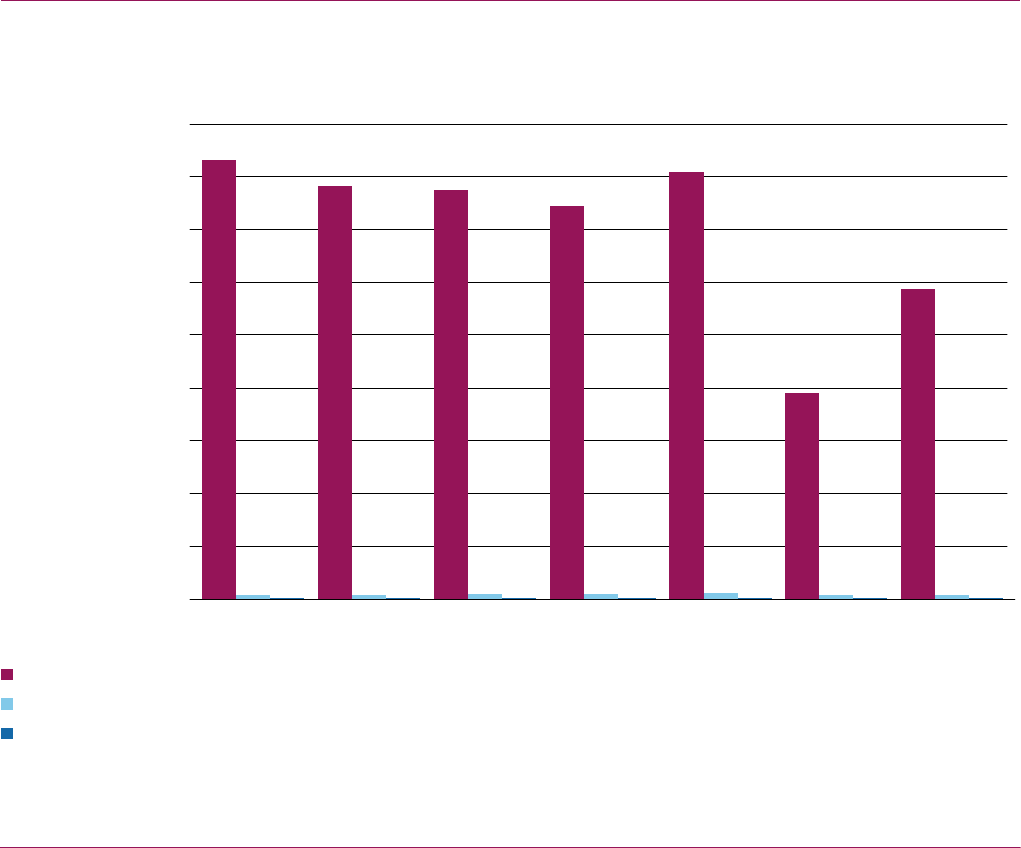
Environmental compliance and enforcement Environment Agency 15
Spend on compliance and enforcement
21 The Environment Agency uses fees and charges from permits and licence
holders to fund compliance activity. From April 2018 the Environment Agency
implemented a revised charging scheme following a review of its fees and charges,
which raised income for compliance activity and overheads to £338 million in
2020-21 from £294 million in 2015-16.
10
10 Fees and charges income funds Environment Agency overheads such as human resources and estate costs
aswellas compliance activity.
Figure 6
Environment Agency annual outputs between 2015 and 2021, by category
Number of outputs (000)
201520162017 2018 2019 2020 2021
0
20
40
60
80
100
120
140
160
180
Year
Note
1 Data are reported in calendar years.
Source: National Audit Office analysis of Environment Agency data
Compliance 166,339 156,361 154,950 148,876 161,589 78,132 117,460
Notices/letters 1,387 1,285 1,778 1,758 2,283 1,674 1,525
Enforcement 188 242 318 397 294 207 252

16 Environment Agency Environmental compliance and enforcement
22 Enforcement activities cannot be cross-subsidised from charges that
the Environment Agency makes for permits and licences. Instead, it allocates
resourcesto enforcement from its grant-in-aid funding for environmental protection.
This grant-in-aid funding fell by 80% between 2010-11 and 2020-21. Furthermore,
the amount of grant-in-aid that is ring-fenced for particular projects, including for
non-enforcement activity, has grown.
23 Between 2010-11 and 2020-21 the amount of grant-in-aid that the Environment
Agency allocated to generic enforcement activity fell from £11.6 million to £7 million.
This includes enforcement associated with the regulation of industrial facilities,
storm overflows and fisheries, as well as in response to serious pollution incidents.
Over the same period ringfenced funding for enforcement to tackle waste crime rose
to £10 million (Figure 7). From 2022-23, the Agency’s previously ring-fenced funding
for waste crime will be incorporated into its core funding.
Staffing for compliance and enforcement
24 The Environment Agency employed 2,711 full-time-equivalent (FTE) staff for
compliance activities in March 2022 and 294 on enforcement roles. On average, the
Environment Agency employs one member of enforcement staff to 10 compliance staff
(Figure 8 on page 18). The number of vacancies has fluctuated over the past six years,
with vacancies as a percentage of total compliance and enforcement staff reaching a
10% high in 2019, falling to 2% in 2021 and increasing again to 6% in 2022.
Issues arising on the Environment Agency
The Committee may wish to explore the following areas:
•
The amount of grant-in-aid allocated for enforcement and the rationale for this
•
How it has responded to its acknowledgement that its progress on the quality of the environment falls
short of expectations.
•
How it ensures its fees and charges income is reflective of the level of risk in its compliance work.
•
How Defra ensures the Environment Agency has the appropriate regulatorytools and funding to
provide effective environmental compliance and enforcement.
•
How its changing use of regulatory tools and approaches has impacted compliance and enforcement
with environmental regulation.
•
The Environment Agency and Defra’s understanding of the skills and staffing needed to deliver their
compliance and enforcement work, both now and inthe future.

Environmental compliance and enforcement Environment Agency 17
Figure
7
Gr
ant-in-aid funding to the Environment Agency for environmental protection, 2010-11 to 2020-21
Grant-in-aid (£m)
Notes
1 The Environment Agency has enforcement responsibilities for a range of sectors including agriculture, industry and waste management. This includes enforcement associated with
the regulation of industrial facilities, storm overflows and fisheries, as well as in response to serious pollution incidents and waste crime.
2 Figures are in nominal terms.
3 This grant-in-aid funding is for the Environment Agency’s environment and business Directorate. The Environment Agency also receives grant-in-aid associated with its flood and
coastal risk management.
Source: National Audit Office analysis of Environment Agency data
Financial year
Ring-fenced enforcement funding for waste crime
Generic enforcement funding (allocated from core grant-in-aid)
Other ring-fenced funding (non-enforcement)
Other grant-in-aid funding (not allocated for enforcement)
105.4
91.4
87.4
78.4
68.5
50.5
46.5
24.5
18.5
16.0 16.0
3.0
12.2
10.1
10.3
20.0
14.9
15.0
15.6
15.0
28.0
23.0
11.6
11.6
11.6
11.6
8.5
8.5
8.5
8.5
8.5
7.0
7.0
2.9
6.1
6.0
6.4
10.0
10.0
10.0
0.0
20.0
40.0
60.0
80.0
100.0
120.0
140.0
2010-11 2011-12 2012-13 2013-14 2014-15 2015-16 2016-17 2017-182018-19 2019-202020-21
1.7
3.0
0.8
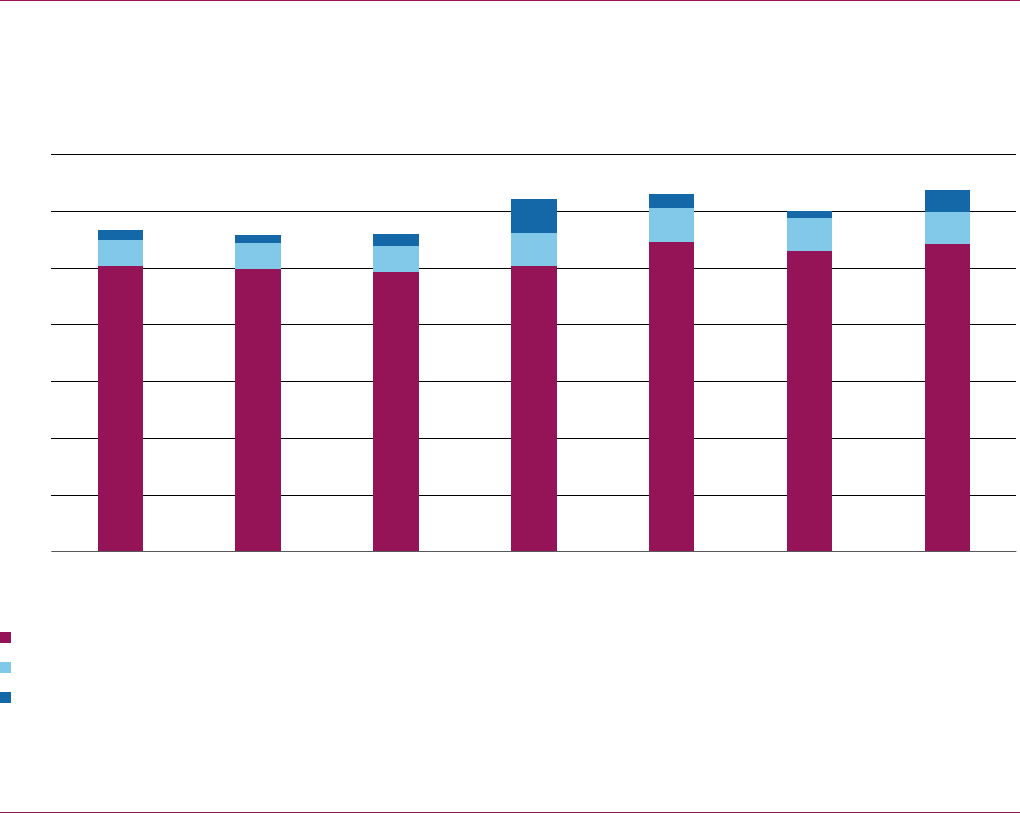
18 Environment Agency Environmental compliance and enforcement
2,514
2,489
2,461
2,520
2,726
2,650
2,711
230
235
234
284
299
292
294
91
66
100
307
129
61
182
0
500
1,000
1,500
2,000
2,500
3,000
3,500
2016 2017 2018 2019 2020 2021 2022
Figure
8
En
vironment Agency compliance and enforcement activity full-time equivalent staffing profile,
20
16 to 2022
Number of full-time equiv
alent staff
Compliance
Enforcement
Vacancies
No
te
1
The numbers given are at 31 March for each year.
Source: National Audit Office analysis of Environment Agenc
y data
Environmental compliance and enforcement Natural England 19
Natural England
Role on environmental compliance
25 Natural England has compliance and enforcement responsibilities with
respectto sites of special scientific interest (see case example section of this
briefing), licensing of work that could affect wildlife and habitats, pesticide poisoning
to animals, complaints relating to weeds, and with respect to regulations relating
to environmental damage, heather and grass burning, and environmental impact
assessments of changes to rural land use.
Compliance and enforcement activity
26 Until 2017-18 Natural England produced an annual report on its enforcement
activity, that included data on complaints and queries it had received about breaches
of relevant regulations, as well as trends in the full range of enforcement action it had
taken including on investigations, enforcement notices and prosecutions. In 2020
Natural England published a register of enforcement action, but this only covers data
on civil sanctions, enforcement undertakings and prosecutions. The register was last
updated in September 2021 and includes data going back to 2007.
27 Natural England provided us with an update of the data included in itspreviously
published annual enforcement reports, which showed that in 2020-21 it:
•
found 276 breaches of species licences;
•
identified 184 poisoning activities under the Wildlife Incident Investigation
Scheme; and
in 2021 it:
•
undertook seven inspections and issued 15 enforcement notices with respect
toinjurious weeds; and
•
accepted two enforcement undertakings and carried out a prosecution against
the Environmental Impact Assessment (Agriculture) Regulations.

20 Natural England Environmental compliance and enforcement
Staffing and spend on compliance and enforcement
28 Over the past six years, the compliance and enforcement staffing profile at
Natural England has fluctuated as a result of funding changes and organisational
restructure. Natural England conducted a review of enforcement in 2017-18, which
found that 14 FTE was recorded against specific items of enforcement casework
across the organisation in the previous financial year. Following this review, it
formed a national enforcement and compliance team which comprised 22 FTE
staff in 2021-22. Natural England was unable to provide us with data on target
staffcomplement for this team over this period.
29 A wider group of staff at Natural England, beyond this core team, also spend
some of their time on compliance and enforcement activity such as monitoring,
inspections and issuing warning letters. Based on time-recording data, Natural
England estimates that total staff time for enforcement and compliance activities
such as monitoring, investigations, and issuing warning letters represented around
81 FTE staff in 2018-19, and grew to around 90 FTE staff in 2021-22. Natural
England estimates that an additional 217 FTE staff time was spent in 2021-22 on
wider regulatory activities such as issuing permits and licences, or dealing with
consents and assents for permitted activity. These are estimates of staff time and not
precise data, because Natural England’s time-recording codes do not consistently
differentiate between compliance and enforcement activity and other types of work.
Similarly, Natural England told us that it considers the increase in staff time reflects
an increase in the amount of grant-in-aid spent on compliance and enforcement
activity, but that it does not have sufficiently granular data to quantify this increase.
Issues arising on Natural England
The Committee may wish to explore the following areas:
•
How the organisation can be held accountable for its enforcement activity without publishing data on
its work and data on spend or staffing requirements.
•
Why it stopped publishing annual information on its enforcement activity (last published in2017-18).
•
How Defra ensures it provides the appropriate regulatory tools and funding to provide effective
environmental compliance and enforcement.
•
How its changing use of regulatory tools and approaches has impacted compliance and enforcement
with environmental regulation.
•
Natural England and Defra’s understanding of the skills and staffing needed to deliver their
compliance and enforcement work, both now and in the future.
Environmental compliance and enforcement Office for Environmental Protection 21
Office for Environmental Protection
Role and overall performance
30 The Office for Environmental Protection (OEP) is a new public body
establishedby the Environment Act 2021. It has a duty to identify and respond to
serious failures to comply with environmental law by public bodies. It has powers
toconduct investigations and commence legal proceedings when needed.
31 In its draft strategy, it outlines four strategic objectives, including
“improvedcompliance with environmental law”, and has committed to
developingaperformance measure framework in due course.
Funding
11
32 Funding for the OEP is provided through ringfenced allocation by Defra for
the current three-year Spending Review period. The budget is for £11.5 million in
2022-23, £7.25 million in 2023-2024; and £7.4 million to £7.7 million for the three
subsequent years, with the option for it to bid for more funds. These baseline
allocations will increase to allow for inflation. This does not include the Northern
Ireland contribution to the OEP’s budget which has not yet been confirmed.
Staffing
33 In its initial phase, the OEP expects to have between 50 and 60 staff across
arange of functions, including technical staff, a complaints and investigation
team,amonitoring team, an insights and analysis team and a legal team.
34 It plans to use multidisciplinary teams on its compliance and enforcement
work,driven by the nature of the issue.
11 The Office for Environmental Protection has not begun compliance and enforcement activity and therefore we were
unable to report on its spend.
22 How environmental compliance is changing Environmental compliance and enforcement
How environmental compliance
ischanging
35 There are a number of recent and proposed changes to the environmental
compliance landscape as a result of the UK’s exit from the European Union, the 2021
Environment Act, and wider developments.
36 A key change to environmental compliance and enforcement responsibilities
resulting from EU Exit is that the Rural Payments Agency will be responsible for
compliance inspections for the Sustainable Farming Incentive (SFI). This scheme
will pay farmers to undertake certain actions that will contribute to environmental
protection and enhancement. The SFI is part of government’s Environmental Land
Management Scheme which will become government’s primary mechanism for
distributing funding previously paid under the EU’s Common Agricultural Policy.
37 Following the Environment Act 2021, government has secured legislative
powers to introduce a number of major new environmental schemes and initiatives,
which will set new environmental requirements for particular organisations or
activities, and necessitate new responsibilities for monitoring, compliance and
enforcement against these requirements. In particular:
•
“biodiversity net gain”, will require developments such as house building to leave
the natural environment in a measurably better state than before work started
on the development.
12
Government issued a consultation on its proposed
arrangements for biodiversity net gain, which notes that planning authorities
will need sufficient capacity and expertise to enforce the biodiversity net gain
requirements, alongside the right powers, policy and guidance.
•
extended producer responsibility for packaging (EPRP) will require producers
to pay the full net costs of managing packaging which arises as waste in
households and is disposed of in street bins managed by local authorities,
which government estimates could involve total payments of around £1.7 billion
a year.
13
The Environment Agency will be the primary regulator for this scheme
in England, using its existing powers to monitor, audit and use civil and criminal
penalties to drive compliance and tackle non-compliance.
12 The Environment Act’s biodiversity net gain provisions involve: for development for which planning permission
is granted under the Town and Country Planning Act 1990, a new planning condition for net gain that must be
met before development may commence; and for Nationally Significant Infrastructure Projects consented under
the Planning Act 2008, a new requirement to meet a biodiversity net gain objective. This will take effect after the
government has published a biodiversity gain statement, or statements, setting out the objective and how the
requirement is to be met, including transitional arrangements.
13 Not all of these payments are new costs, as packaging producers already pay towards the cost of recycling through
the Packaging Recycling Obligations.
Environmental compliance and enforcement How environmental compliance is changing 23
38 Other changes under consideration include:
•
the Competition and Markets Authority issued the Green Claims Code in
2021 to support businesses to ensure their environmental claims comply
with the law.
14
It committed to carry out a compliance review in 2022 and will
take appropriate action where there is evidence of breaches of consumer
protection l aw.
•
the Financial Conduct Authority (FCA) will consult in summer 2022 on
proposals to implement the Sustainability Disclosure Requirements set out in
government’s Greening Finance: A Roadmap to Sustainable Investing policy
paper in October 2021.
15
The disclosures will require FCA-regulated firms to
adhere to common standards when classifying and labelling financial products
in order to hold firms to account for their sustainability claims.
•
Defra launched a consultation on the Nature Recovery Green Paper:
ProtectedSites and Species in March 2022. It looks specifically to address
existing licensing regimes and enforcement toolkits.
16
14 Competition and Markets Authority, Making environmental claims on goods and services, September 2021,
availableat: www.gov.uk/government/publications/green-claims-code-making-environmental-claims/environmental-
claims-on-goods-and-services
15 HM Treasury, Greening Finance: A Roadmap to Sustainable Investing, October 2021, available at: www.gov.uk/
government/publications/greening-finance-a-roadmap-to-sustainable-investing
16 Department for Environment, Food & Rural Affairs, Nature Recovery Green Paper: Protected Sites and Species,
March 2022, available at: https://consult.defra.gov.uk/nature-recovery-green-paper/nature-recovery-green-paper/

24 Case examples Environmental compliance and enforcement
Case examples
Case example 1: Sites of special scientific interest (SSSI)
Issues arising on SSSIs
The Committee may wish to explore the following areas:
•
Whether Natural England has sufficient assurance over the current condition of SSSIs, given it lacks
data on how regularly it has inspected each site.
•
Natural England’s approach to determining an appropriate level and balance of type of enforcement
action on SSSIs, and in particular why enforcement actions fell substantially between 2013-14 and
2020-21 (from 151 to 39).
•
Natural England’s rationale for increasing its staffing for monitoring of SSSIs between 2018-19 and
2021-22 (from 12 to 49 FTE), and how it assesses the effectiveness of this work.
•
Natural England’s plans to improve the condition of SSSIs, given that government did not meet its
2020 targets for their condition.
About sites of special scientific interest
39 An SSSI is an area of land notified by a conservation body as being of “special
scientific interest by reason of its flora, fauna, or geological or physiographical features”.
SSSIs are the most common statutory nature conservation designation in England.
There are more than 4,100 SSSIs in England, covering around 8% of the land area.
Significance for achieving government’s environmental objectives
40 In its 25 Year Environment Plan published in 2018, government committed to
protecting and enhancing England’s biodiversity on land, water and sea, including
restoring 75% of the protected land and freshwater SSSIs to favourable condition.
17
In 2011, Defra produced a strategy for England’s wildlife and ecosystem services with
the ambition of “better wildlife habitats with 90% of priority habitats in favourable
or recovering condition and at least 50% of SSSIs in favourable condition, while
maintaining at least 95% in favourable or recovering condition” by 2020.
18
17 HM Government, A Green Future: Our 25 Year Plan to Improve the Environment, January 2018, available at:
https://assets.publishing.service.gov.uk/government/uploads/system/uploads/attachment_data/file/693158/25-
year-environment-plan.pdf
18 Department for Environment, Food & Rural Affairs, Biodiversity 2020: A strategy for England’s wildlife and
ecosystem services, August 2011, available at: https://assets.publishing.service.gov.uk/government/uploads/
system/uploads/attachment_data/file/69446/pb13583-biodiversity-strategy-2020-111111.pdf
Environmental compliance and enforcement Case examples 25
Roles and responsibilities
41 Natural England is responsible for: designating SSSIs; consenting to activities
which may impact features of special interest; providing advice to SSSI owners
and managers; providing advice on the impacts of proposals which need other
permissions; assessing and monitoring the condition of SSSIs; investigating reports
of damage to sites; and assisting in the enforcement of legal measures to protect
sites and prosecute offenders.
The main environmental regulations and standards that apply
42 Owners and occupiers of SSSI-designated land must receive consent
fromNatural England before certain activities can be carried out on the land.
Theseactivities may be considered necessary for the long-term sustainable
management of the site. If the features of special interest on the SSSI are
deteriorating from neglect or poor management, Natural England can put a
management scheme in place. If the decline is a result of wilful or reckless damage
to the site, then it may take enforcement measures. If the owner fails to carry out the
work established in the management scheme, a management notice can be issued,
and if work is not carried out within two months of Natural England’s deadline, then
the owner is breaking the law and it is open to enforcement action.
Spending and staffing on enforcement and compliance for SSSIs
43 Natural England estimates that staff time on monitoring and enforcement of
SSSIs rose from around 12 FTE staff in 2018-19 to 49 FTE in 2021-22. This estimate
focuses on staff time for enforcement and compliance activities such as monitoring,
investigations, and issuing warning letters. It estimates that a total of 131 FTE staff
time was spent in 2021-22 on wider regulatory activities such as issuing permits and
licences, or dealing with consents and assents for permitted activity. It is not possible
to give a precise figure for staff time because Natural England’s time-recording
codes do not consistently differentiate between compliance and enforcement
activityand other types of work.
44 In 2021-22 Natural England received an additional £63 million funding from
Defra, some of which was used to re-establish a nationally co-ordinated programme
of SSSI monitoring and evaluation. It could not provide us with information on staff
and spend in this area over a longer time-period.
45 Natural England also pays external contractors to undertake monitoring work
on SSSIs, which increased from £205,000 in 2019-20 to £713,000 in 2021-22.
26 Case examples Environmental compliance and enforcement
Scale of compliance and enforcement activity
46 In October 2019, the UK statutory bodies agreed new common standards which
recognised that there has been a reduction in resources available for protected
area monitoring and removed a previous expectation that sites would be assessed
every six years. Natural England moved away from this six-year cycle in response to
a reduced capacity for monitoring and a shift to a more risk-based process. It was
unable to provide data on the extent of the shortfall against the six-year cycle.
47 Natural England told us that it has agreed memoranda of understanding with
a few organisations to support them in gathering their own data on the SSSIs they
own, which Natural England can then use to make a condition assessment. As part
of our 2020 Environmental sustainability overview of the Ministry of Defence, which
owns 3.5% of all British SSSIs, we found that it had been concerned about the
resource implications of carrying out detailed site condition surveys in the absence
of regular assessments by Natural England.
19
Natural England told us it is developing
a targeted long-term monitoring programme for its SSSIs and plans to work with the
Ministry of Defence and other major landowners to understand how this might best
be implemented on their land.
48 Natural England took enforcement action in response to 39 offences in
2020-21, a continued significant decline from the peak during the financial
year2013-14 (Figure 9).
49 The most common source of criminal activity on these sites from 2008 to 2021
has been due to vehicles, closely followed by construction and dumping.
Performance on improving the condition of SSSIs
50 Over the past five years, there has been very little change in the area of SSSIs
categorised as in favourable condition, from 38.5% in 2016 to 38.4% in 2021
(Figure 10 on page 28). This falls below the 50% target set out in government’s
Biodiversity 2020 strategy.
20
The overall proportion of SSSIs in favourable or
unfavourable recovering condition remained above the 95% target from 2011 to
2016 but has since fallen year-on-year to 91.4% in 2021.
19 National Audit Office, Environmental Sustainability Overview, May 2020.
20 See footnote 18.

Environmental compliance and enforcement Case examples 27
Warning Letter 84 93 113 92 79 92 146 102 93 72 45 24 23 24
Caution 5 1 3 8 0 1 1 0 0 0 0 0 0 0
Civil sanction (including EU) 0 0 0 0 0 3 1 15 8 7 10 9 3 15
Prosecution 2 2 2 0 4 0 3 0 0 0 0 0 2 0
Note
1
Warning letters, cautions, civil sanctions and prosecutions are increasingly severe enforcement actions and thus, an offence which receives a warning letter followed by a caution
orcivilsanction will be counted twice in this graph – once for each action.
Source: National Audit Offi ce analysis of Natural England data
Figure 9
Enforcement actions related to sites of special scientifi c interest (SSSIs), 2007-08 to 2020-21
Number of enforcement actions
Financial year
0
20
40
60
80
100
120
140
160
2007-082008-09 2009-102010-11 2011-122012-13 2013-142014-15 2015-162016-17 2017-182018-19 2019-202020-21

28 Case examples Environmental compliance and enforcement
Figure 10
Cumulative percentage of sites of special scientific interest (SSSIs) rated favourable or unfavourable (recovering)
by Natural England, 2003 to 2021
Percentage of SSSI (%)
No
te
1
Percentages do not sum to 100 as SSSIs are categorised into the following four conditions: favourable, unfavourable (recovering condition), unfavourable (no change) or
unfavourable (declining condition), and part destroyed or destroyed. Only favourable and unfavourable (recovering condition) categories contribute to the target.
Source: National Audit Office analysis of Natural England data
Unfavourable (recovering condition)
Favourable condition
Target (95%)
0
10
20
30
40
50
60
70
80
90
100
2003 2004 2005 2006 2007 2008 2009 2010 2011 2012 2013 2014 2015 2016 2017 2018 2019 2020 2021
Year

Environmental compliance and enforcement Case examples 29
Case example 2: Waste crime
Issues arising on waste crime
The Committee may wish to explore the following areas:
•
How the Environment Agency expects the lifting of the ringfenced enforcement budget will affect
performance on waste crime.
•
How the Environment Agency balances the type of enforcement actions used to tackle waste crime.
•
The Environment Agency’s understanding of its effectiveness in tackling serious criminality in
thewaste sector.
•
Whether government should improve its understanding of total spend on tackling waste crime
acrossdifferent organisations.
About waste crime
51 ‘Waste crime’ takes many forms, including fly-tipping, illegal dumping or
burningof waste; deliberate mis-description of waste; operation of illegal waste
management sites; and illegal waste export. The Environment Agency’s 2021
National Waste Crime Survey found that industry stakeholders perceived waste
crime to be widespread, with those from the waste industry estimating that 18%
ofall waste is illegally managed.
52 In the absence of an official estimate of the cost of waste crime to the English
economy, the Environment Agency, Defra and HM Treasury use an estimate made by
the Environmental Services Association (ESA), the trade body representing the UK’s
resource and waste management industry, of £924 million in 2018-19.
21
Significance for achieving government’s environmental objectives
53 In its 25-Year Environment Plan, published in 2018, government set the
ambition to eliminate waste crime and illegal waste sites within 25 years.
22
Thegovernment’s approach to waste crime over the short to medium term is
setoutin its Resources and waste strategy, published in December 2018.
23
21 Environmental Services Association, Counting the cost of UK waste crime, July 2021, available at:
www.eunomia.co.uk/reports-tools/counting-the-cost-of-uk-waste-crime
22 See footnote 17.
23 HM Government, Our waste, our resources: a strategy for England, December 2018, available at: https://assets.
publishing.service.gov.uk/government/uploads/system/uploads/attachment_data/file/765914/resources-waste-
strategy-dec-2018.pdf
30 Case examples Environmental compliance and enforcement
Roles and responsibilities
54 Defra has policy responsibility for waste, including waste crime, within
government. The Environment Agency, an executive non-departmental public body
sponsored by Defra, is the principal body responsible for regulating the waste sector.
The Environment Agency is responsible for investigating certain types of waste
crime and taking action against the perpetrators, including illegal waste sites, illegal
dumping (the most serious fly-tipping incidents) and breaches of environmental
permits and exemptions. Responsibility for clearing waste ultimately sits with the
landowner or land manager. As we have previously reported, local authorities also
have powers and duties relating to fly tipping and deal with many smaller incidents.
HM Revenue & Customs has responsibility for pursuing the evasion of landfill tax.
The Environment Agency works with the police and other partners to investigate and
prosecute serious criminality in the waste sector with links to other types of crime.
The environmental regulations and standards that apply
55 One of the main regulations that applies to waste crime is the Environmental
Protection Act (1990), which created a duty of care for waste which applies to
anyone who imports, produces, carries, keeps, treats or disposes of controlled
waste. It requires them to take all reasonable steps to keep their waste safe,
including ensuring any third parties used are authorised to take it and are able
andlikely to deal with it or dispose of it lawfully and safely.
Resources and spending
56 Since 2011-12, the Agency’s core funding for environmental protection,
covering waste and other areas of work, has fallen, but over this period government
provided it with ring-fenced grants for tackling waste crime. The Agency’s total
funding allocated for enforcement and waste crime rose from around £12 million in
2010-11 to £17 million in 2018-19, (Figure11) remaining at this level in cash terms
through to 2021-22.
57 The Environment Agency can also draw on funding allocated to wider
enforcement for its work on waste crime, although it could not provide a breakdown
of how much was used for this purpose. Its wider funding allocated to enforcement
has declined over the same period (see Figure 7 on page 17).
58 From 2022-23, the Environment Agency’s previously ring-fenced funding for
waste crime will be incorporated into its core funding. The Environment Agency is
exploring options including the use of new powers in the Environment Act 2021 to
recharge for waste incidents and implementing charging schemes for upcoming
regulatory reforms which cover the cost of enforcement.
59 Defra does not collate total spending on tackling waste crime across the many
organisations involved, and most have experienced budget reductions since 2010-11.

Environmental compliance and enforcement Case examples 31
Figure
11
En
vironment Agency use of funding for enforcement and waste crime in England, 2010-11 to 2021-22
Grant-in-aid funding (£m)
No
tes
1
Ring-fenced waste crime funding includes a range of ring-fenced grants. For example, the Waste Enforcement Programme provided £23 million of funding over four years
(2016-17 to 2019-20) to tackle illegal waste sites, illegal exports and the mis-description of waste.
2
Figures are in nominal terms.
Source: National Audit Office analysis of Environment Agenc
y data
Environmental protection funding allocated to enforcement
Ring-fenced waste crime funding
13.0
11.6 11.6 11.6
8.5 8.5 8.5 8.5 8.5
7. 07.0 7. 0
0.8
2.9
1.7
3.0
6.1
6.0
6.4
10.0
10.0 10.0 10.0
0
2.0
4.0
6.0
8.0
10.0
12.0
14.0
16.0
18.0
20.0
2010-11 2011-12 2012-13 2013-14 2014-15 2015-16 2016-17 2017- 18 2018-19 2019-20 2020-21 2021-22
Financial year

32 Case examples Environmental compliance and enforcement
Scale of compliance and enforcement activity
60 The Environment Agency completed 11,987 investigations into waste crime
between 2014-15 and 2020-21, with most (64%) of these related to illegal waste
sites (Figure12).
61 The most common compliance and enforcement actions taken by the
Environment Agency in response to waste crime are issuing advice and guidance
and sending warning letters. In line with government policy for regulators to take a
risk-based and proportionate approach to enforcing compliance, the Environment
Agency’s policy is to give advice and guidance or issue a warning to bring an offender
into compliance where feasible, only moving to more formal sanctions, such as
cautions, and potentially criminal proceedings, in more serious cases or where informal
approaches have not worked. Over the period 2014-15 to 2020-21, the Environment
Agency issued advice and guidance in 52% of investigations into illegal waste sites
and in 53% of investigations into breaches of environmental permit conditions.
Sending warning letters was the second most common action for both types of crime.
The Environment Agency’s responses to major incidents of fly-tipping show the same
pattern. In contrast, it uses civil sanctions extensively in cases of producer responsibility
offences: between 2014-15 and 2020-21, it imposed civil sanctions in 57% of the 334
producer responsibility offence cases where it investigated and took action.
62 The number of prosecutions of companies and other organisations per year
has fallen from a peak of nearly 800 in 2007-08 to 17 in 2020-21 (Figure 13).
TheEnvironment Agency finds criminal prosecutions to be resource-intensive
and time-consuming, requiring high evidential standards. It therefore reserves
prosecution for cases of blatant criminality.
Figure 12
Environment Agency waste investigations closed between 2014-15 and
2020-21 andassociated actions, in England
Crime type Investigations
closed
Number of
resultant actions
Illegal waste sites 7,628 4,940
Environmental permit breaches 3,309 1,832
Illegal dumping (the most serious fly-tipping incidents) 665 187
Producer responsibility non-compliance 385 334
Total 11,987 7,293
Notes
1
Actions included in this count are: advice and guidance, warning letters, legal notices, fi xed penalty notices,
civilsanctions, cautions and prosecutions.
2
Some investigations may involve no relevant actions, and some may involve more than one action.
3
Environment Agency published data do not contain the number of incidents that led to an investigation.
Source: National Audit Offi ce analysis of Environment Agency Waste Investigations Report
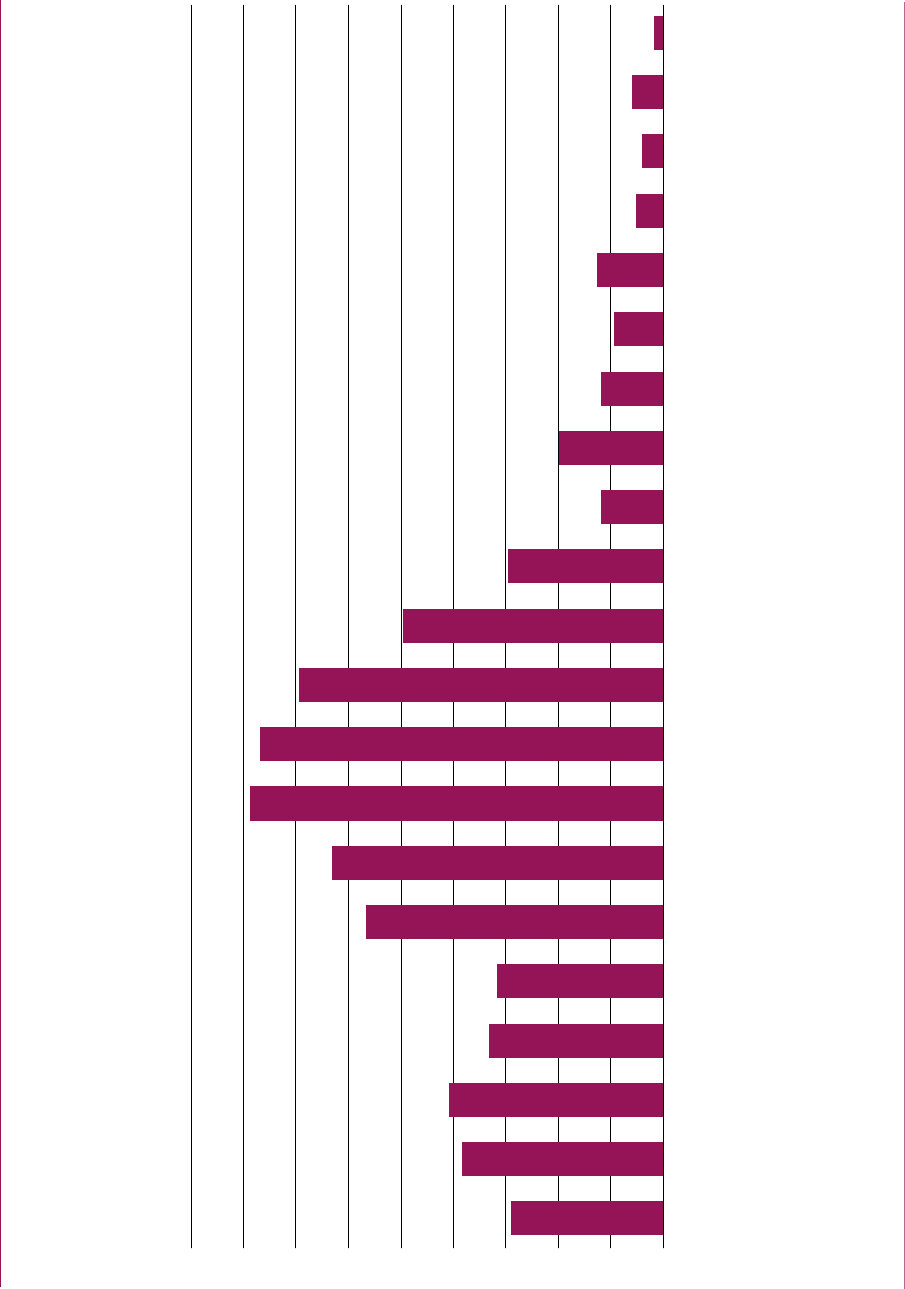
Environmental compliance and enforcement Case examples 33
Figure 13
Number of prosecutions of companies and other organisations undertaken by the Environment Agency in England,
2000-01 to 2020-21
Number of prosecutions
The number of prosecutions per year has decreased significantly since 2007- 08
Notes
1 Prosecutions are assigned to financial years using the ‘date of action’ recorded.
2 Multiple charges against the same offender are counted individually.
Source: National Audit Office analysis of Environment Agency dataset: Environment Agency Prosecutions
2000-01
2001-02
2002-03
2003-04
2004-05
2005-06
2006-07
2007-08
2008-09
2009-10
2010-11
2011-12
2012-13
2013-14
2014-15
2015-16
2016-17
2017- 18
2018-19
2019-20
2020-21
290
383
408
332
317
567
630
787
768
693
495
295
119
198
118
94
126
52
41
60
17
0
100
200
300
400
500
600
700
800
900
Financial year

34 Case examples Environmental compliance and enforcement
63 The average fine associated with successful prosecutions has tended to rise
over the same period that the number of prosecutions has fallen, although the
smaller numbers involved leads to greater variability by year. The average of the
258fines in the five years to 2019-20 is £18,123, while the average of the 1,027
fines in the five years to 2014-15 was £4,996. Before 2016-17, the highest single fine
in the period was £100,000; from 2016-17 onwards, there have been individual fines
of several times this level.
64 For further information on government’s approach to waste crime, including
actions taken by local authorities and the Environment Agency, please refer to our
Investigation into government’s actions to combat waste crime in England.
24
Case example 3: Storm overflows
Issues arising on storm overfl ows
The Committee may wish to explore the following areas:
•
How the Environment Agency’s enforcement action will be impacted by climate change induced
changesto rainfall levels.
•
How the Environment Agency ensured monitors have been placed in appropriate locations.
•
How the Environment Agency balances the type of enforcement actions used to secure compliance.
About storm overflows
65 During heavy rainfall, the capacity of storm overflow pipes can be exceeded,
which means possible inundation of the sewerage system and/or sewage works
andthe potential to back up and flood people’s homes, roads and open spaces
unless it is allowed to spill elsewhere. Storm overflows were developed as overflow
valves to reduce the risk of sewage backing up during heavy rainfall.
Significance for achieving government’s environmental objectives
66 In its 25 Year Environment Plan, government committed to achieving clean and
plentiful water. Material spilling from storm overflows bypasses sewage treatment,
and can cause damage to the environment if concentrations of pollutantsare above
standards or objectives set down in legislation.
25
24 Comptroller and Auditor General, Investigation into government’s actions to combat waste crime in England,
Session 2021-22, HC 1149, National Audit Office, April 2022.
25 See footnote 17.
Environmental compliance and enforcement Case examples 35
The environmental regulations and standards that apply
67 Storm overflow permits for wastewater treatment works define the volume
of storm flow that should receive full treatment at a site. Only once an overflow
threshold is reached should flow be diverted to the environment, or at a sewage
treatment works into a storm tank of specified capacity. The contents of this tank
should then be sent for treatment once inflows reduce unless the ongoing inflow
exceeds its capacity. If that is the case, the contents of the tank are permitted to
bedischarged as a storm overflow. The capacity of these storm tanks and the
volume of overflow allowed to be discharged depends on the capacity of the sewer
or size of the treatment plant. In January 2021, the environment minister announced
thatmonitoring would be required for all storm overflows, adding requirements to
low- and non-amenity sites.
Roles and responsibilities
68 The Environment Agency is primarily responsible for maintaining and improving
the quality of fresh, marine, surface and underground waters in England, while policy
is set by Defra and Ofwat is responsible for the economic regulation of the privatised
water and sewerage industry.
Spending and staffing for compliance and enforcement activity on
stormoverflows
69 The Environment Agency did not receive any dedicated funding for
enforcement on storm overflows, prior to the 2021 Spending Review, in which it was
allocated £21 million for water company and agricultural enforcement for the period
2022-23 to 2024-25. From 2010-2011 to 2019-20, the core grant-in-aid from which
the Environment Agency’s enforcement work is funded reduced by 80%, from
£117million to £23 million (Figure 7 on page 17). The Environment Agency was not
able to provide a breakdown of enforcement activity spend or resource utilisation
specific to storm overflows.
The scale of compliance and enforcement activity
70 The Environment Agency told us that it is progressively rolling out new
technology to monitor spills from storm overflows and that this has substantially
increased its ability to secure compliance. The total number of overflows monitored
increased from 855 in 2016 to 12,286 in 2020. Figure 14 overleaf shows that
newly monitored overflows have spilled more on average than those that already
had monitors.
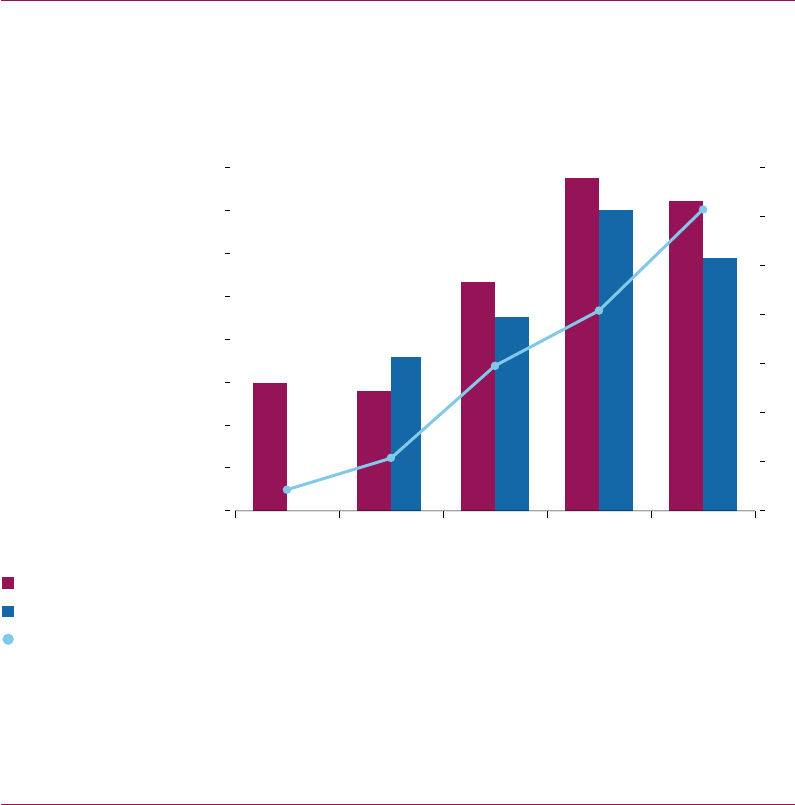
36 Case examples Environmental compliance and enforcement
71 Where the Environment Agency finds a water company has breached its legal
permit, including as a result of storm overflows, it can take enforcement action
such as prosecution. From 2016, the Environment Agency began to move more
towards pursuing enforcement undertakings from water companies (Figure15).
Anenforcement undertaking is a voluntary offer made by an offender to: put right
the effects of their offending; put right the impact on third parties; or to make
sure the offence cannot happen again. The Environment Agency states that it will
consider accepting an enforcement undertaking where it is not in the public interest
to prosecute; where the offer addresses the cause and effect of the offending; and/
or where the offer protects, restores or enhances England’s natural capital.
2016 2017 2018 2019 2020
14.9
0
855
14.0
17.9
2,145
26.7
22.6
5,906
38.8
35.1
8,160
36.1
29.5
12,286
0
2
4
6
8
10
12
14
0
5
10
15
20
25
30
35
40
Figure
14
Av
erage number of spills per overflow, comparing newly added monitors
each
year to existing, 2016 to 2020
Average number of spills
per overflow
Number of monitored
overflows (000)
Year
New
To tal monitored overflows
Existing
Note
1
We did not receive returns from the Environment Agency for all companies for 2016 and 2017. It confirmed
requirements for data provision in 2018, and all companies submitted returns in this format from 2018
onwards. Prior to this, five (2016) and six (2017) out of nine companies submitted returns in this format,
while some of the others submitted returns in different formats that were not comparable.
Source: National Audit Office analysis of Environment Agency data
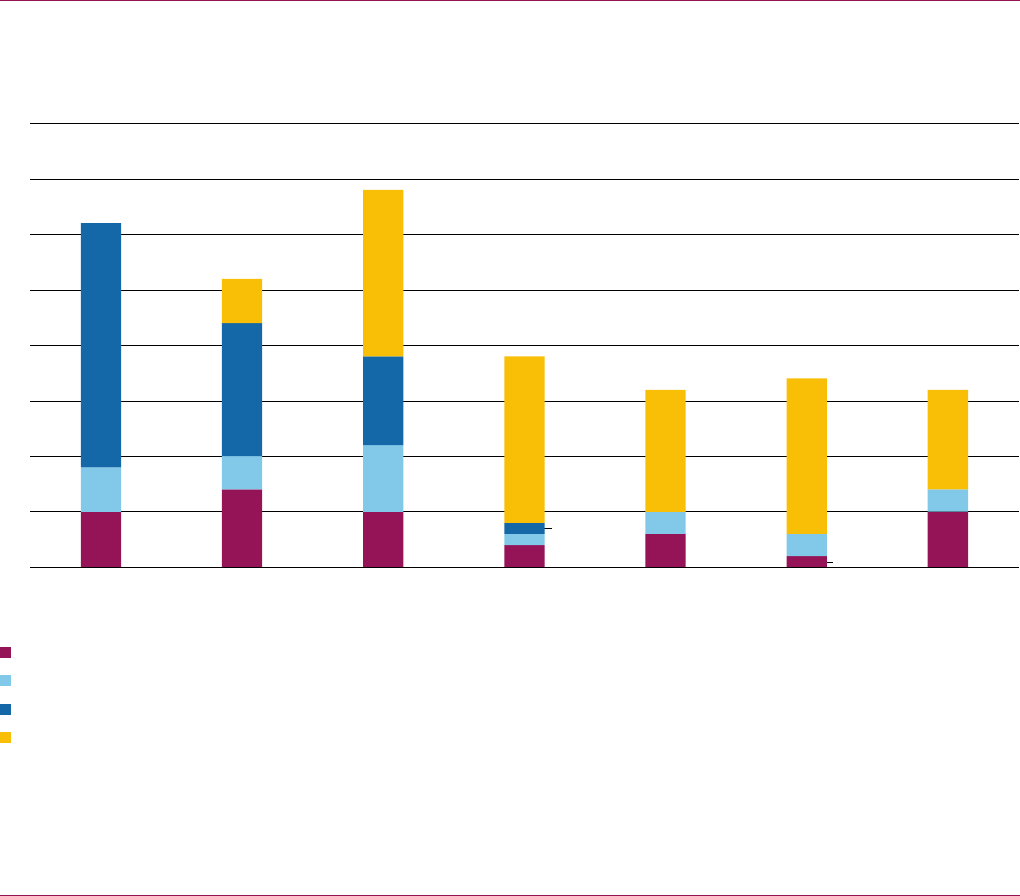
Environmental compliance and enforcement Case examples 37
1
5
7
5
2
3
5
4
3
6
1
2
2
2
22
12
8
1
4
15
15
11
14
9
0
5
10
15
20
25
30
35
40
2015 2016 2017 2018 2019 2020 2021
Figure 15
Number
of enforcement actions against water companies by the Environment Agency, 2015 to 2021
Number of ac
tions
No
tes
1
We do not have the breakdown of formal cautions and enforcement undertakings which featured storm overflows.
2
Cases against a company sentenced in court on the same day count as one prosecution and if a prosecution has an appeal hearing it is
recorded here according to the date of the hearing, not the original prosecution date.
Source: National Audit Office analysis of Environment Agenc
y data
Year
Number of cases receiving formal caution
Number of enforcement undertakings
Number of prosecutions (storm overflow element)
Number of prosecutions (no storm overflow element)
72 Formal cautions moved from being the most common type of action used
in 2015 to none being applied between 2019 and 2021. In 2021, the number
of enforcement undertakings fell to nine, with an increase in the number of
prosecutions increasing to seven.
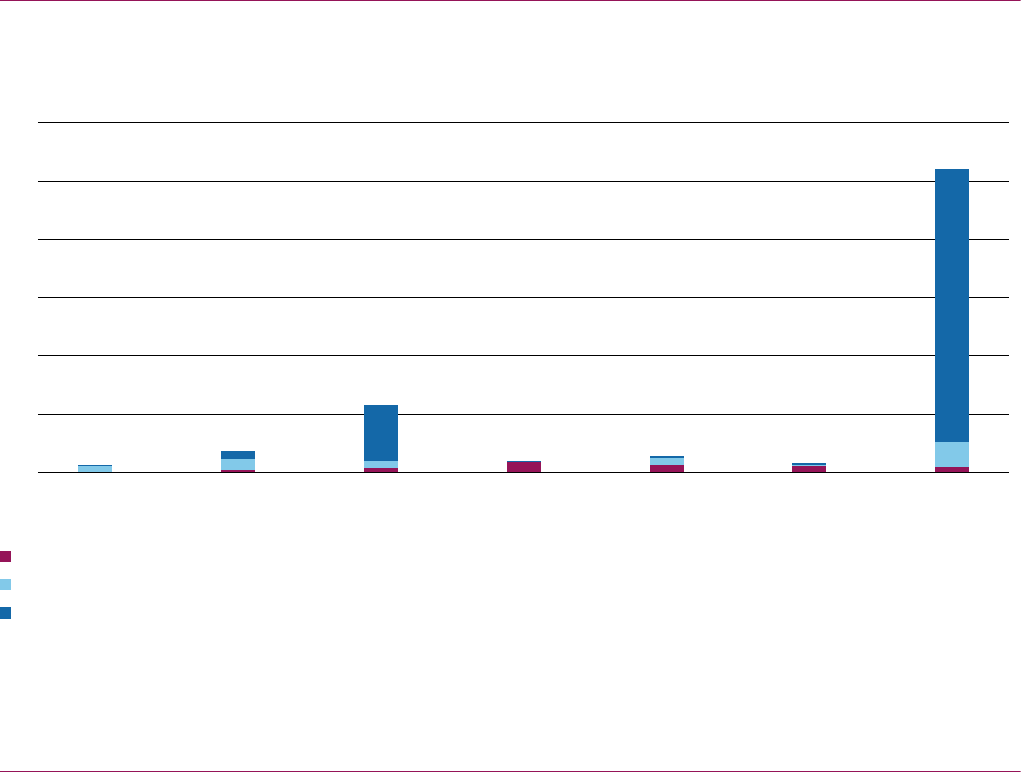
38 Case examples Environmental compliance and enforcement
73 Fines applied to water companies had been increasing up until 2017 and
then began to fall until 2020 (Figure 16). In 2017 the Environment Agency issued
a £18.75million fine to Thames Water and in 2021 a £90 million fine to Southern
Water, both relating to the illegal discharge of sewage, some of which was attributed
to storm overflows.
74 For more information on storm overflows, please refer to our publication
Understanding storm overflows: Exploratory analysis of Environment Agency data.
26
26 National Audit Office, Understanding storm overflows: Exploratory analysis of Environment Agency data,
September2021.
0
20
40
60
80
100
120
2015 2016 2017 2018 2019 2020 2021
Fines applied to
water companies (£m)
Year
Enforcement undertakings
Prosecution (nostorm overflowelement)
Figure 16
To
tal value of fines applied to water companies by the Environment Agency, 2015 to 2021
No
tes
1
Most of the fines from prosecutions in 2017 came from a case brought against Thames Water, totalling £18.75 million and in 2021 from a case
against Southern Water totalling £90 million. Both related to the illegal discharge of sewage, some of which is attributed to storm overflows.
2
Figures are in nominal terms.
Source: National Audit Office analysis of Environment Agenc
y data
Prosecution (storm overflow element)
Environmental compliance and enforcement Appendix One 39
Appendix One
Our evidence base
1 In compiling this work we drew on information and data from the Department
for Environment, Food & Rural Affairs, Environment Agency, Natural England and
Office for Environmental Protection.
2 We reviewed published documents and internal management information
relating to their role, spend, staffing, compliance and enforcement work, as well as
reported performance.
3 We also spoke to officials at each organisation to understand the policy
landscape within which it operates.
4 We conducted semi-structured interviews with the Local Government
Association and National Trading Standards to understand their roles within the
regulatory regime.
5 We did not conduct interviews with other public bodies, but did share extracts
with named bodies to check the factual accuracy of any references.
6 We drew on other publicly available information on environmental protection,
aswellas our publications including:
•
our 2021 good practice guide, Principles of Effective Regulation (available at:
www.nao.org.uk/report/principles-of-effective-regulation);
•
Achieving government’s long-term environmental goals (available at: www.nao.
org.uk/report/achieving-governments-long-term-environmental-goals);
•
Environmental metrics: government’s approach to monitoring the state
of thenatural environment (available at: www.nao.org.uk/wp-content/
uploads/2019/01/Environmental-metrics-governments-approach-to-
monitoring-the-state-of-the-natural-environment.pdf); and
•
The Environmental Land Management Scheme (available at: www.nao.org.uk/
report/the-environmental-land-management-scheme).
40 Appendix One Environmental compliance and enforcement
7 We drew on our following publications for the case examples:
•
Environmental Sustainability Overview of the Ministry of Defence (available at:
www.nao.org.uk/report/environmental-sustainability-overview);
•
Understanding storm overflows: Exploratory analysis of Environment
Agencydata (available at: https://committees.parliament.uk/
writtenevidence/39089/default); and
•
Investigation into government’s actions to combat waste crime in England
(available at: www.nao.org.uk/report/investigation-into-governments-actions-
to-combat-waste-crime-in-england).
This report has been printed on Pro Digital
Silkand contains material sourced from
responsibly managed and sustainable
forestscertified in accordance with the
FSC(Forest Stewardship Council).
The wood pulp is totally recyclable and
acid-free. Our printers also have full ISO 14001
environmental accreditation, which ensures
that they have effective procedures in place to
manage waste and practices that may affect
the environment.
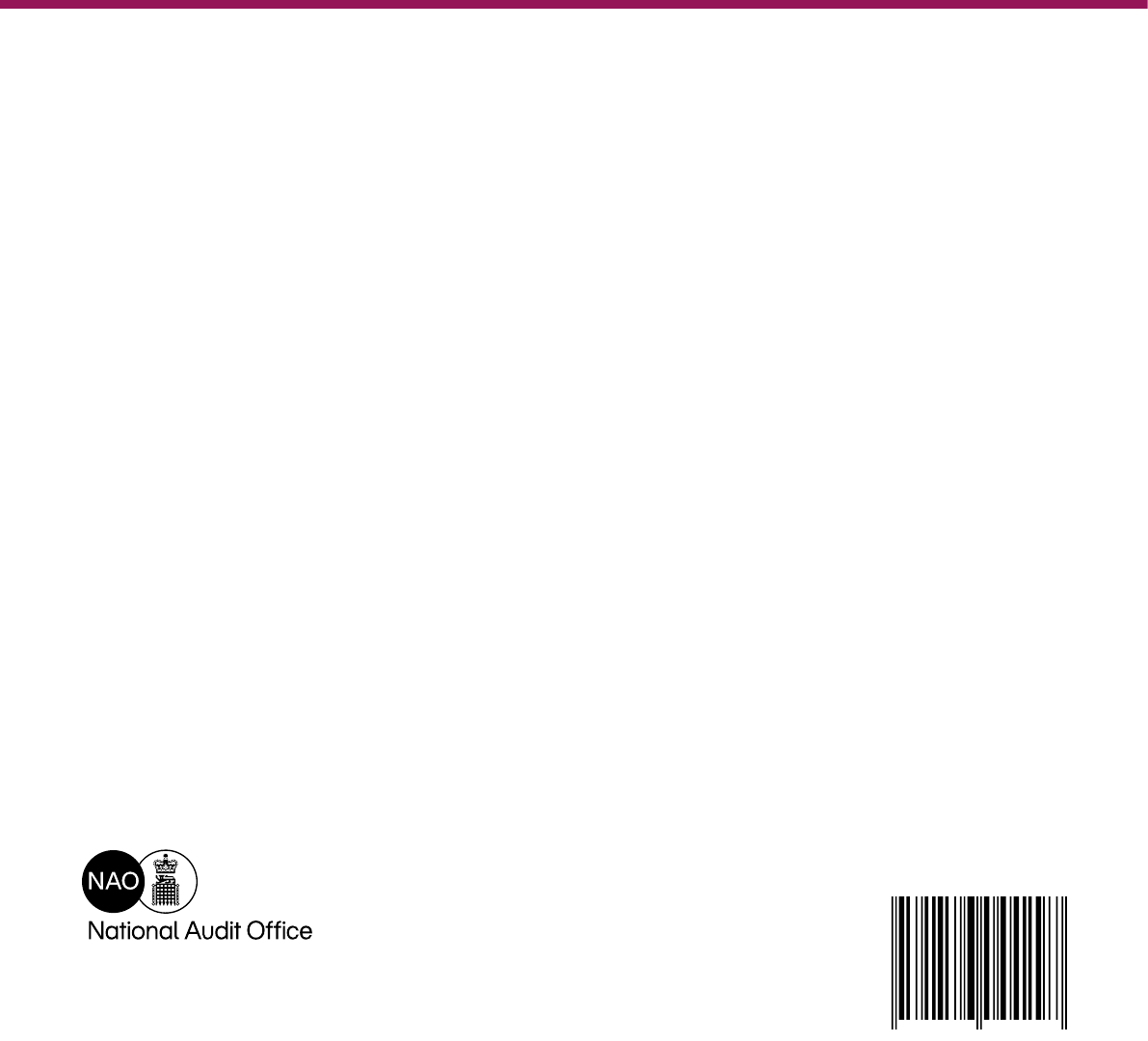
You have reached the end of this document
9 781786 044297
ISBN 978-1-78604-429-7
£10.00
Design and Production by NAO Communications Team
DP Ref: 012143-001
